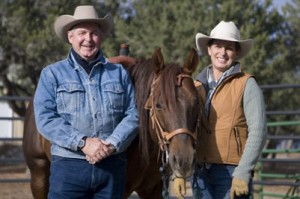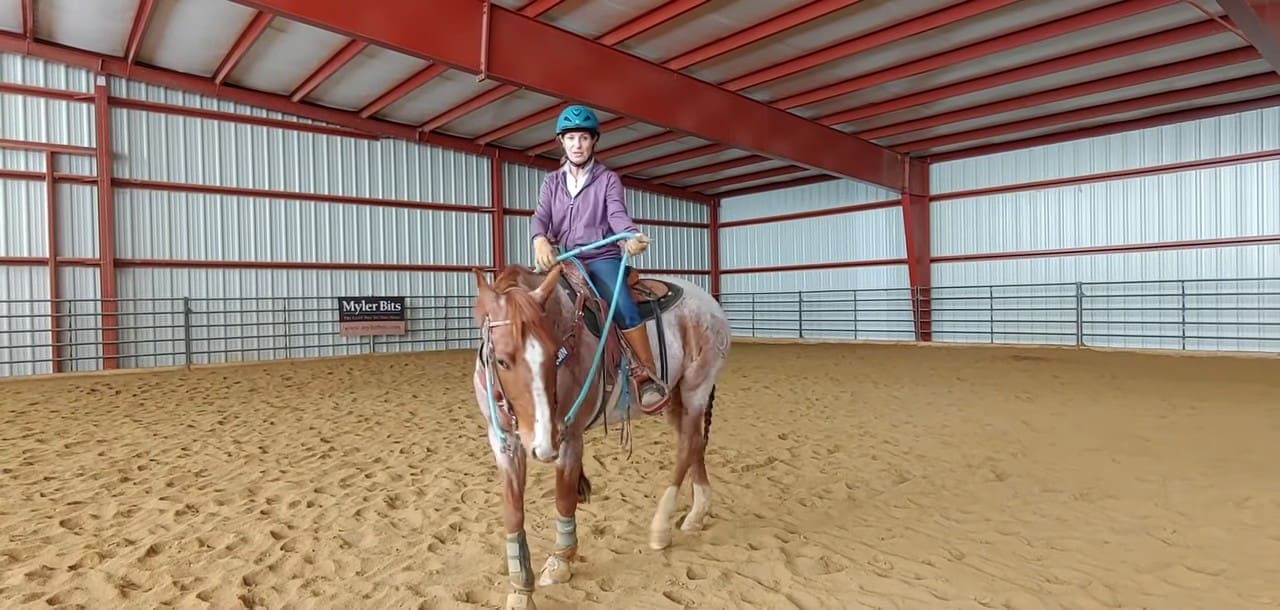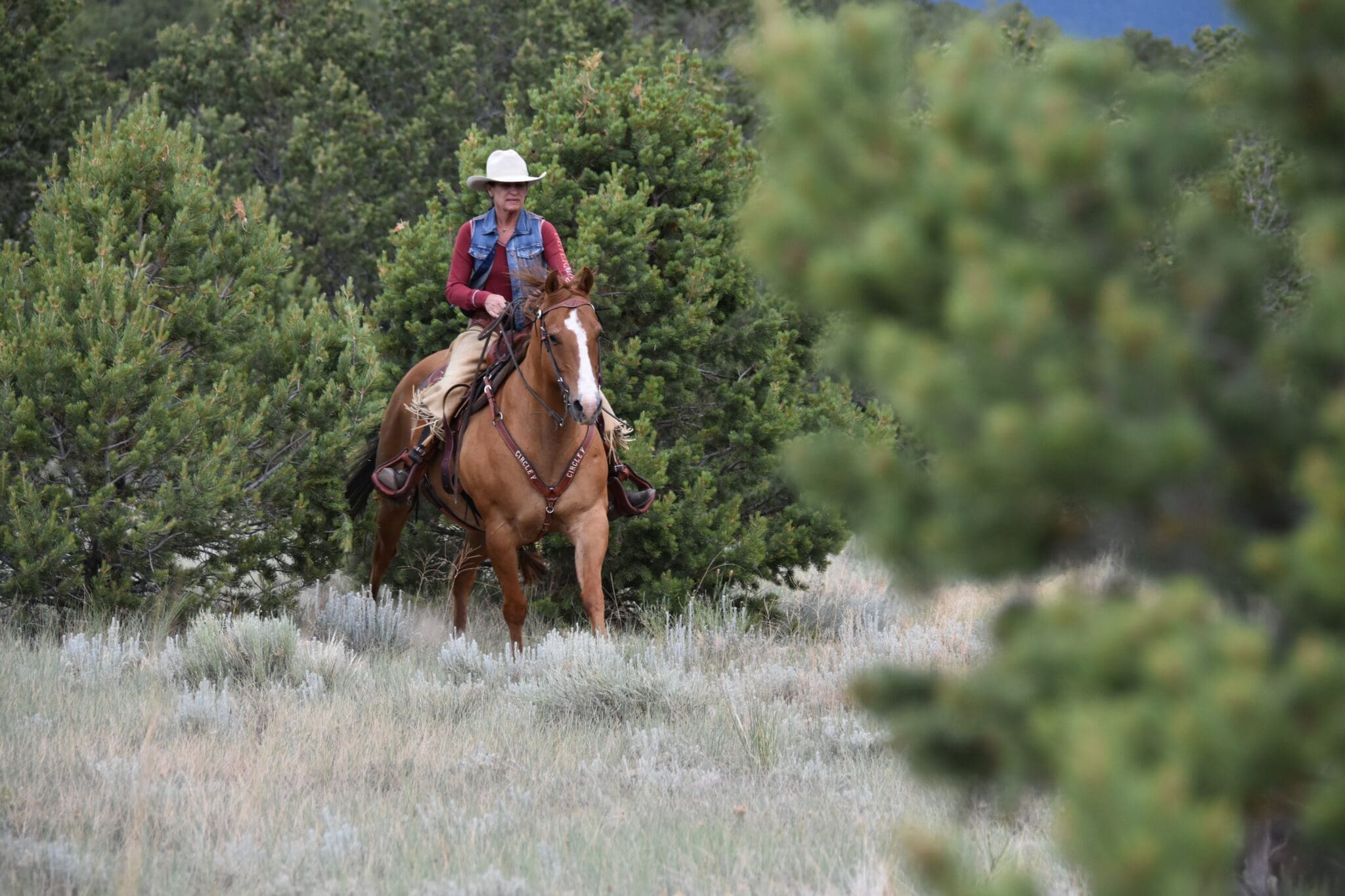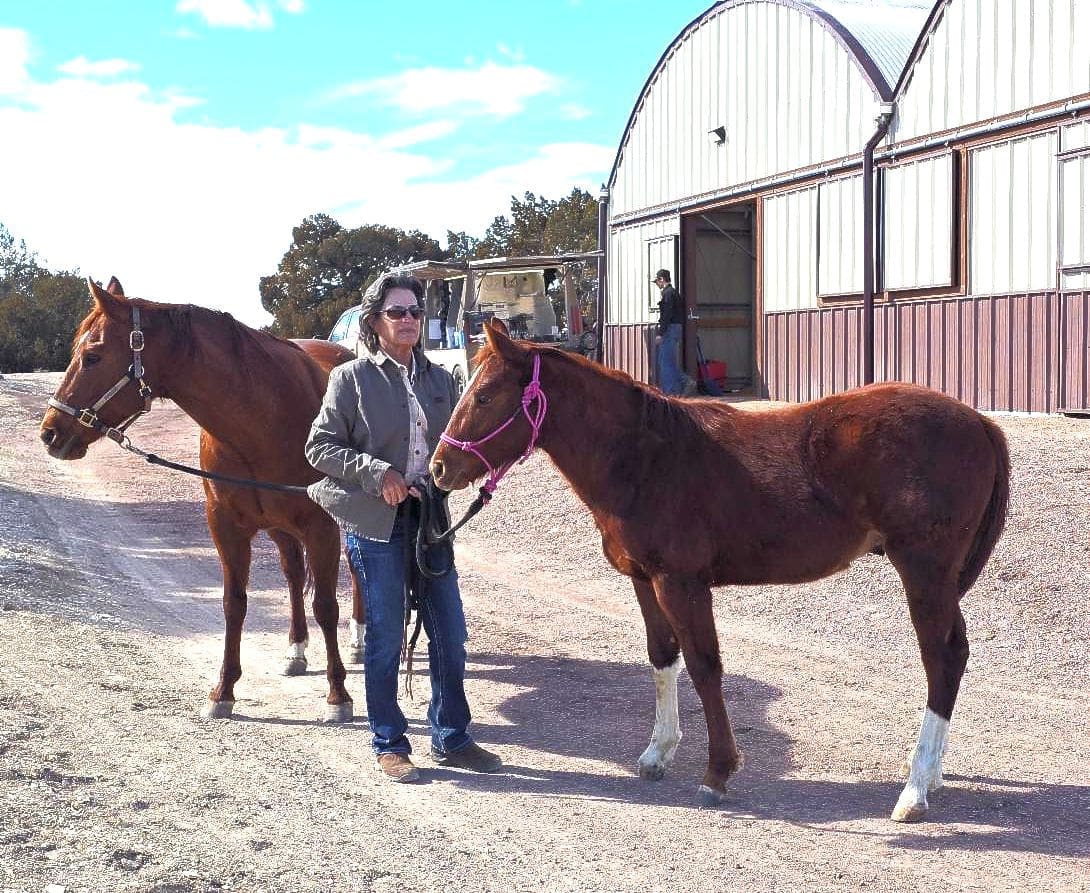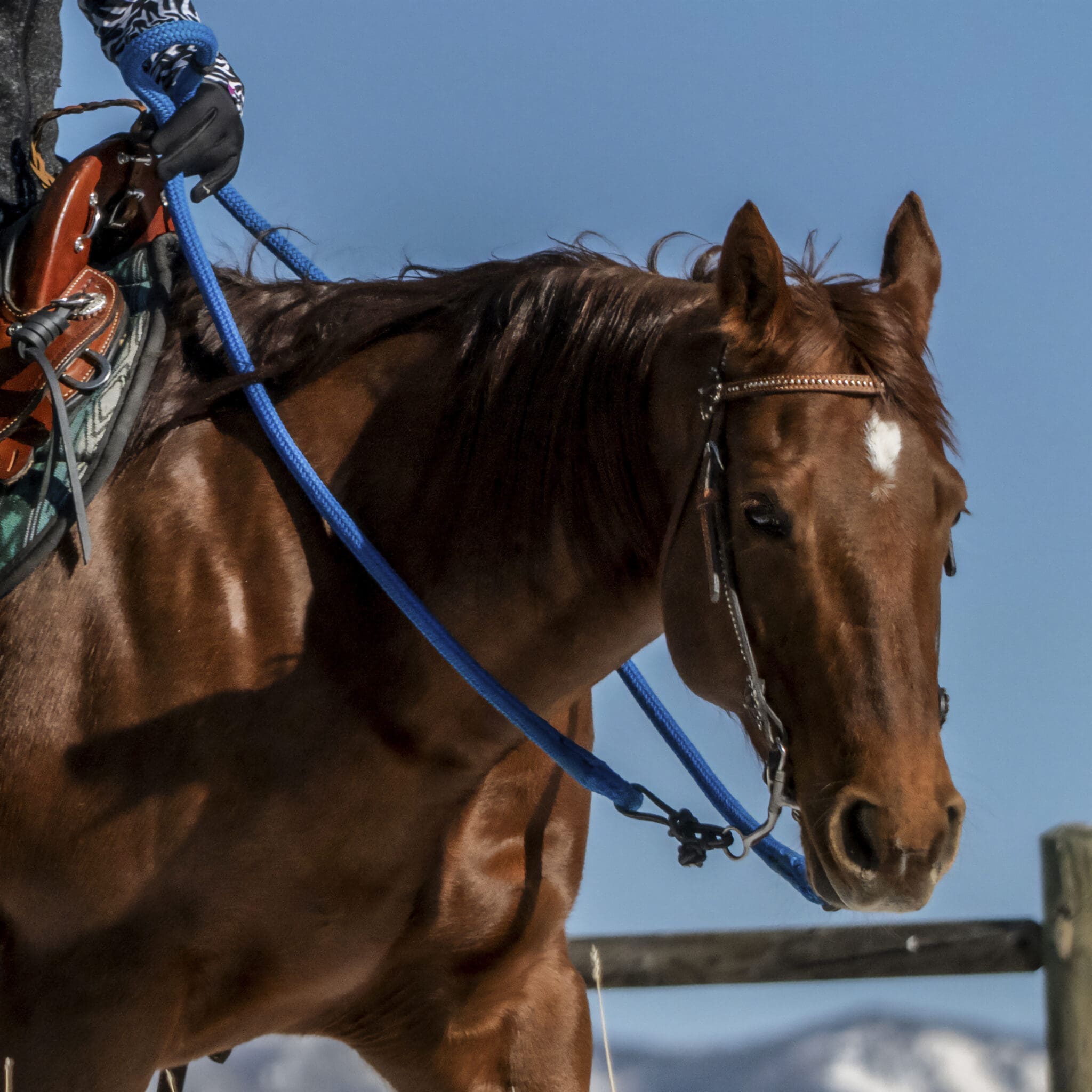I’ve been having too much fun this week taking a private bitting clinic from Dale Myler, of Myler Bits USA. Dale was kind enough to come and give us his undivided attention for a couple of days to impart a lifetime of information on bits and bit design. I invited a several friends—all riders and/or trainers and over the course of two days, we worked with 15 different horses. Everything from an unbroke three year old who never had a bit in his mouth to Rich’s finished bridle horse—with a big variety of training levels in-between .
It was the most fun with horses I’ve had in a while and I don’t have enough time today to write all the things I learned (hence the fun). I fell in love with Myler bits years ago when they first came out and gradually through the years, they became the only bits to hang on bridles in my tack room. I knew intuitively why I liked them, knowing from the beginning that they had an ergonomic shape and must be more comfortable in the horse’s mouth. Although I was the only one in our group that had much experience with Myler bits, we all figured out right away, from Dale’s power point presentation, why the bits would work. It wasn’t until we were in the arena trading horses and bridles like crazy, that we could see the results first-hand.
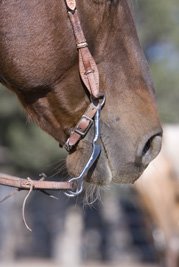 What I got the most from the clinic, was learning why I love the Myler bits so much. First off, looking at a dental picture with the horse’s teeth closed but lips opened by a speculum, you can see that the tongue fills the entire mouth when his teeth are shut—just like yours does. Having your tongue up in your palate is normal and feels good. It is not possible to put a bit in a horse’s mouth without it being pressed into the palate by the tongue. Pressure on the tongue does not feel good and if you don’t believe it, try poking your finger into your tongue.
What I got the most from the clinic, was learning why I love the Myler bits so much. First off, looking at a dental picture with the horse’s teeth closed but lips opened by a speculum, you can see that the tongue fills the entire mouth when his teeth are shut—just like yours does. Having your tongue up in your palate is normal and feels good. It is not possible to put a bit in a horse’s mouth without it being pressed into the palate by the tongue. Pressure on the tongue does not feel good and if you don’t believe it, try poking your finger into your tongue.
Everything a horse can do to evade bit pressure has to do with him looking for relief from tongue pressure—whether he throws his head up, roots the reins, gapes at the mouth, sucks his tongue up in his throat, puts his tongue over the bit, comes behind the vertical. He’d rather have pressure anywhere than the tongue and by going through these gyrations, he always finds tongue relief. Even the bars of his mouth can take a lot more pressure than the tongue (try pressing on your bars—behind your molars and you’ll see what I mean). Myler bits are designed to relieve tongue pressure and distribute the pressure to other areas (like the nose, chin, poll, bars) in order to make the horse more comfortable and relaxed so that he is trainable and can perform to his fullest.
Here’s another interesting thing Dale said, a rider will never learn to have quiet and soft hands until she rides a soft and relaxed horse. That makes so much sense. If your pulling and struggling and hanging on for dear life, where’s the feel comes from? What I learned was that sometimes we can bit a horse differently so that he can tolerate the rider’s uneducated or inarticulate hands. Because I sell a lot of finished horses to novice riders, I already knew this and it’s one reason why I always send the horses to their new home with the right bit.
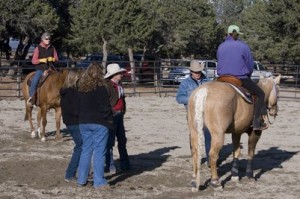 What was fun about the clinic was switching bits on horses and seeing instant results. I was pleased to learn that the bit I was already using on my horse Dually was probably the best thing for him but I realized I can get the same mouth piece in a snaffle side piece when I want to do more schooling on him. Rich had bought a Myler hand crafted reined cowhorse bit for his new horse a few months ago and Dale felt it was the ideal bit for him for show and we tried a few different bits on him for home-use. It was really interesting to feel the different bits on a very finished horse—a small change in the bit would be very noticeable in how Diggs responded and we settled on the same bit that I use on Dually for Diggs.
What was fun about the clinic was switching bits on horses and seeing instant results. I was pleased to learn that the bit I was already using on my horse Dually was probably the best thing for him but I realized I can get the same mouth piece in a snaffle side piece when I want to do more schooling on him. Rich had bought a Myler hand crafted reined cowhorse bit for his new horse a few months ago and Dale felt it was the ideal bit for him for show and we tried a few different bits on him for home-use. It was really interesting to feel the different bits on a very finished horse—a small change in the bit would be very noticeable in how Diggs responded and we settled on the same bit that I use on Dually for Diggs.
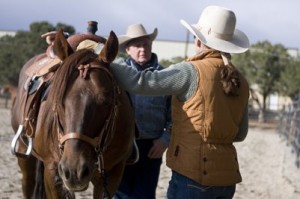 A lot of people these days seem to be asking, “why use a bit at all?” While many, if not most broke horses will work okay in a halter, a bit can provide the communication and precise cues that will help you achieve great performances. When used improperly, the devices can be treacherous, but with education and proper, kind use, a bit can help you better your communication and control. There are many things that compel us to use bits: more control, subtle communication, training to a high level of performance or maybe because the rules for your discipline compel you. What about you? What do you think about riding in a halter only or riding bridleless and without a bit? And are you happy, or more importantly, is your horse happy with the bit you use? Every time I’ve given a presentation on bits, the room has been full of people with lots of questions. I find it’s important to ask horse owners a few questions, too: How and what have you learned about bits? Why are you using the bit you use? If you have reasons beyond “that’s what someone told you to use,” do the reasons make sense? It’s a big subject! Post your thoughts here!
A lot of people these days seem to be asking, “why use a bit at all?” While many, if not most broke horses will work okay in a halter, a bit can provide the communication and precise cues that will help you achieve great performances. When used improperly, the devices can be treacherous, but with education and proper, kind use, a bit can help you better your communication and control. There are many things that compel us to use bits: more control, subtle communication, training to a high level of performance or maybe because the rules for your discipline compel you. What about you? What do you think about riding in a halter only or riding bridleless and without a bit? And are you happy, or more importantly, is your horse happy with the bit you use? Every time I’ve given a presentation on bits, the room has been full of people with lots of questions. I find it’s important to ask horse owners a few questions, too: How and what have you learned about bits? Why are you using the bit you use? If you have reasons beyond “that’s what someone told you to use,” do the reasons make sense? It’s a big subject! Post your thoughts here!
